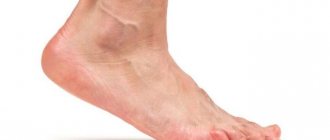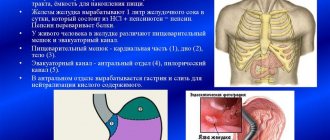Warts are growths that appear on the skin due to exposure to the human papillomavirus. A subcutaneous wart on the foot causes discomfort and pain while walking. The source of the disease enters the body through damaged skin. The source of infection is other people's socks, shoes, and the virus enters through dirt and dust. Ignoring subcutaneous tumors and improper treatment causes the growth of pathology. Treatment options include medications, electrocoagulation, cryodestruction, and surgical removal.
A subcutaneous wart may not cause pain, but if it is on the feet, discomfort cannot be avoided.
What are warts on the foot?
Doctors call benign formations in the form of overgrown skin on the foot plantar warts. In common parlance, such neoplasms are referred to as thorns or spinules. They are formed on the human body due to the activity of various types of human papillomavirus.
Foot warts or Verruca plantaris are growths on the soles and toes that not only cause discomfort but can also be painful. In modern times, this type of skin disease in dermatology is the most common, which occurs in many people. A wart, no matter where it appears, makes no one happy.
And the appearance of a wart on the sole is a complete disaster, because it causes severe pain when walking. Which, however, is not surprising, because the entire weight of the body presses on the wart. And the larger the wart, the stronger the pain. Sometimes they are so strong that they turn walking into a real challenge.
Let us describe in more detail what plantar warts on the foot look like:
- A growth of viral origin does not have skin lines.
- Outwardly it resembles a dry callus, a flat crater of a volcano.
- Surface color is yellow-white, grayish.
- Dark dots are noticeable as in the photo below.
Before the formation of a wart, the skin becomes smooth and shiny, then the epidermis becomes coarser and thickens. An unevenness is formed in the area of which discomfort is felt. If you soak the surface of the growth and rub it with a pumice stone, the blackheads - clogged subcutaneous vessels - begin to bleed.
What does a plantar wart look like?
The wart appears most often on the soles of the feet; the inner side of the toes, the junction of the toes with the sole and on the heels are also affected. Externally, a wart looks like an overgrown callus. First, infectious, dense skin with a smooth surface appears. Over time, this compaction becomes covered with keratinized cells. As they develop, plantar warts on the feet, which are white, flesh-colored, or pink, turn brown, yellow, brown, or gray in color.
The size of the growths varies from 1 mm to 2 cm. The wart on the feet protrudes slightly and can merge with other growths on the foot. In the center of large formations, depressions or dark spots (damaged capillaries) are noticeable. The longer a wart on the feet goes untreated, the larger it grows. Plantar growths can be painful because they are subject to friction when walking. Such growths cause particular discomfort to children who are constantly moving and playing. If a wart appears quickly, it is recommended to make an appointment with a specialist.
There are two types of growths:
- single, warts appear on the foot one at a time and are not related to each other
- mosaic, growths appear one after another and are interconnected like a mosaic
Warts on the feet of children and adults require qualified treatment. If the growths are not treated, the person experiences discomfort when walking. Also, the external attractiveness of the foot decreases. If a subcutaneous wart appears again after treatment or removal, then it is worth visiting an immunologist and checking your immunity.
Causes of warts, methods of infection
Warts on the foot appear due to infection with the human papillomavirus.
This usually occurs in very early childhood, and the first warts occur in preschool age. Due to the stability of the body's immunity, warts do not appear, but as soon as the immunity is weakened, wart formations immediately begin to grow. There are only two ways to infect feet with warts:
- independent (weakened immunity);
- from person to person through everyday life.
For the development of a wart virus in the foot, a special provoking environment is required: abrasions, scratches, other open wounds, excessive sweating of the feet, excessive dry skin on the feet, diabetes mellitus.
Expert opinion
Sakania Luiza Ruslanovna
Dermatovenerologist, cosmetologist, trichologist
Ask a Question
The only culprit is the human papillomavirus. Transmitted from sick to healthy, this little nasty thing under certain conditions provokes the appearance of warts.
Despite the fact that HPV is very aggressive and contagious, it can spread in the human body only under certain conditions:
- The presence of microcracks, wounds or abrasions on the foot.
- Good blood supply to the penetration site.
- Presence of warmth and nutrition (increased sweating of the skin of the feet).
- Weakened immunity.
Useful video
Let's see how to remove a wart on the leg at home. Be careful, it's dangerous! Although warts on the feet are quite common, they are easy to treat. You should not try to tear them out, shave them, or comb them - this will only worsen the problem. It is better to undergo a comprehensive examination and find the primary cause of their appearance, and then follow the recommendations of the attending physician.
Rate this article: ( 7 ratings, average: 4.86 out of 5)
Save the link so as not to lose it, you will need it:
Signs and symptoms of warts on the foot
It would seem, what signs might there be?
Well, a wart and a wart. But no, people very often confuse a plantar wart with an ordinary callus or corns. And they realize that they were mistaken only when they try to cut off the wart - instead of the expected clear liquid, droplets of blood appear. Therefore, it would be useful to know how to distinguish a wart from calluses. This is not difficult to do if you evaluate the nature of the pain. If you have a plantar wart, when you press on it, you will experience sharp pain on the sides of the growth. And if there is pain in the middle of the growth, most likely you are dealing with a common callus.
Although, if the wart is very large, it will be very difficult to accurately determine the location of the pain, since almost the entire foot will hurt. And another way to understand whether you have a wart or not is to carefully examine it. A plantar wart will have a rounded, flat shape with clearly defined edges.
Expert opinion
Sakania Luiza Ruslanovna
Dermatovenerologist, cosmetologist, trichologist
Ask a Question
The color of a wart on the feet is usually flesh-colored or dark brown, and in its center there is a slight darkening - there are blood vessels that feed this very wart. Gradually, the seals become overgrown with a stratum corneum, causing discomfort while walking.
If in this case the warts on the foot are not treated, they will become denser and rougher. Having steamed and slightly cut off the growths, you can see the characteristic dark dots at the base.
These are nothing more than thrombosed blood vessels through which the papilloma virus feeds. This fact must be taken into account before cutting, and before removing a wart on the foot, you must stock up on a sterile swab. After removal, it may bleed, and infection may occur at the cut site.
In some cases, plantar tumors go away without treatment 2-3 years after their appearance. But in most cases they have to be removed, as they can cause disability.
Before treating plantar warts, you need to know that trying to remove them on your own can lead to infection or more growth on the foot, so it is better to consult a doctor.
Types of warts
- Single. One or several (usually no more than 2-3) warts that are not connected to each other appear on the foot.
- Mosaic. They are formed as a result of disorders in the immune system with a high concentration and activity of the human papillomavirus in the blood. Daughter warts can connect with the mother wart, forming bizarre patterns on the sole, reminiscent of a mosaic.
Diagnostics
The main method for diagnosing warts is a visual examination by a dermatologist or surgeon.
If it is difficult to make a diagnosis, dermatoscopy can be used. As a result of multiple magnification using a dermatoscope, the specialist determines the signs characteristic of plantar warts: structure, color, parameters. First, the top layer of cells is removed from large keratinized areas. Differential diagnosis is carried out with other skin neoplasms (hyperkeratosis of the skin of the feet, calluses, skin consequences of infection with syphilis, molluscum contagiosum).
If there are multiple formations on the skin of the feet, a blood test for HPV may be prescribed, as well as an ultrasound of the sole of the foot to determine the depth of wart germination.
Differentiated diagnosis of a neoplasm on the foot is performed when:
- The presence of malignant neoplasms;
- Deformative foot pathologies;
- Differentiation from keratoderma is made in people with Reiter's syndrome. A wart is distinguished from keratoderma by thrombosed capillaries, small size, flat shape, and lack of inflammation.
- With syphilis, formations also appear on the palms and soles, which in appearance resemble a wart. Usually these signs are located in the form of rings, arcs, they are very painful. A routine syphilis test will allow you to distinguish them from warts and make an accurate diagnosis.
Possible complications
Meanwhile, if you discover a wart on the skin, you should not wait for it to disappear, but it is better to immediately begin treatment so that the disease does not spread from the legs to other parts of the body.
Lack of treatment can lead to infection of surrounding people with the papilloma virus, while treating warts after a while will be problematic and time-consuming. Infection with the virus can occur through direct contact with the skin of the source, so it is important to exercise extreme caution and practice good personal hygiene to prevent the virus from spreading to healthy people.
Expert opinion
Sakania Luiza Ruslanovna
Dermatovenerologist, cosmetologist, trichologist
Ask a Question
The human papillomavirus is dangerous because it can live freely without human intervention for several months, so it can settle on the walls of showers, benches, floors and remain there for a long time until the room is thermally treated.
In this regard, the virus is aggressive and contagious; it attacks the human skin as a result of direct contact and enters the body through the outer layers of skin cells. After the virus enters the body, a person may not be aware of its presence for a long time, since the disease, as a rule, does not manifest itself for several months.
If foot warts are not treated promptly, they can cause significant pain. In addition, plantar warts can actively grow through autoinoculation and infect healthy skin on the foot in the area of the tumor.
Plantar warts look very unpleasant and are accompanied by features that cause discomfort, and the structure of the wart in this case is no different from what is found in other parts of the body.
The main signs of the formation of a wart on the foot include:
- The appearance of hard and rough growths on the soles of the feet, causing significant discomfort;
- Constant itching on the soles of the feet;
- Pain of varying degrees of intensity while walking and running;
- When pressing on the tumor, noticeable pain is felt;
- In some cases, warts may bleed when injured or deliberately cut.
New growths on the soles have an unpleasant odor and are yellowish or dirty brown in color. If a wart on the foot is opened, inside you can see numerous black dots formed due to damage to the capillaries, which often bleed. It is the presence of such points that distinguishes a plantar wart from other types of injury to the skin of the feet.
Treatment of warts on the foot
https://youtu.be/gsEz6ZDL078
While plantar warts are small, they rarely receive special attention, not to mention specific treatment. The wart can remain on the sole for quite a long time - sometimes several years and in rare cases disappears on its own. But most often this does not happen - the wart gradually grows and begins to cause pain.
But this is not the most unpleasant thing - if the human papillomavirus becomes too active, other warts will begin to appear, sometimes merging into a group. It is quite natural that in such cases the treatment will be much more difficult. And you won’t be able to do without it, because otherwise the ever-increasing pain will deprive you of the ability to walk normally.
Expert opinion
Sakania Luiza Ruslanovna
Dermatovenerologist, cosmetologist, trichologist
Ask a Question
Important! People suffering from diabetes should treat foot warts exclusively under the strict and constant supervision of a doctor. The same goes for children, teenagers and the elderly - no amateur performances! It is very difficult to predict how their body will behave.
Although, strictly speaking, monitoring by a doctor during the treatment of plantar warts will not hurt anyone. Scars that may remain on the surface of the skin after improper removal of a wart are often painful and quite difficult to get rid of.
Therefore, treatment of warts on the feet should always begin with the most gentle method - you will always have time to move on to radical measures.
Wart removal methods
Plantar warts are the most stubborn of all, so be prepared for the fact that treatment will require a lot of effort and, most importantly, patience. Of course, you may be lucky and get rid of warts on the foot the first time and in a short time, but most often it takes quite a long time.
After the doctor removes the wart, he will prescribe special antiviral therapy that will help eliminate the root cause of the problem - the human papillomavirus. If a person does not receive such treatment, sooner or later he will develop a new wart on his legs. And “this song is good, start over.”
In addition, you should not forget your immune system. You remember that you can get infected anytime, anywhere? And it cannot be guaranteed that a person who has recovered from the papilloma virus can catch it again. And in order for this virus to not activate in your body, your immunity must be strong enough to contain it.
Cryotherapy
Behind such a beautiful word lies the usual freezing of the wart - most often with liquid nitrogen. The plantar wart is treated with liquid nitrogen using a special applicator. Under its influence, a blister with watery contents very quickly forms around the wart. Within about 7-10 days, the dead layers of the wart will peel off, and in another week, the crust formed at the site of wart removal will heal.
During this procedure, a person may experience pain of moderate intensity, and the blister is quite painful. But scars almost never remain - of course, only if the doctor correctly calculated the depth of freezing. Therefore, it is very important to choose a truly experienced specialist.
Cantharidin
Cantharidin is a substance found in Spanish fly. Plantar warts are treated with a liquid solution - there is almost never any pain. After about 12-24 hours, blisters appear at the treatment site. They must be treated with iodine and a sterile bandage applied. At this stage, pain may make itself felt, but not very intensely.
The bandage must be changed every day, until the crust that appears at the site of the dead wart falls off. It is recommended to treat the wound with salicylic alcohol every time you change the dressing. If the wound does not begin to heal within 7-10 days, go to the doctor immediately!
Laser therapy
One of the most common treatment methods today is laser therapy. Using a laser beam, the doctor carefully removes the wart, leaving only a light pink spot, the color of which will soon match the rest of the skin. Most often, there are no scars left after laser removal of warts on the feet.
Electrocoagulation
The essence of this method of wart removal is the effect of high-frequency electric current on its blood vessels. As a result, the wart is deprived of nutrition and dies very quickly. The method is good for removing small warts. If they are large, the risk of scar formation is high.
Surgical excision of the wart
This method of removal is the most traumatic. The doctor uses a scalpel to excise the body of the wart and then apply the required number of stitches. Today, doctors practically do not resort to this method. Firstly, it is painful. Secondly, the risk of wound infection is high. Thirdly, rough, painful scars usually remain.
Treatment and removal
Treatment of subcutaneous formations is carried out in a complex of measures to avoid recurrence. If a person is diagnosed with a wart, then treatment is carried out in 2 ways - therapy aimed at boosting immunity and eliminating the pathology itself. If you simply remove the growth, then in 30% of patients it forms again. The main directions of treatment are the application of ointments and physical removal. When treating periungual formations, prepare for partial or complete removal of the nail.
Pharmacy products
The main component of most ointments against subcutaneous tumors is salicylic acid, which is an antiviral agent. Treatment of pathology with ointments takes a long period, but this method has virtually no contraindications and is used in pregnant women and children. Also among the ointments used are oxolinic and interferon ointments. Before applying the ointment, it is recommended to steam the affected area well to speed up the penetration of the drug. Use at night for a month. Other pharmaceutical drugs:
- "Imiquimod" - a cream that fights pathology and stimulates the production of interferon, which acts against papillomavirus.
- “Ferezol” is an oily liquid that cauterizes and disinfects the affected skin, used 3-4 times.
- "Verrukacid" is a drug that acts directly on the subcutaneous formation, without damaging healthy skin.
- "Collomac" is a salicylic acid-based cream that softens the growth tissue and accelerates resorption. Application period: 7 days.
- “Iodine” - cauterizes the wart and promotes tissue death.
Chemical removal of a subcutaneous wart is a rather aggressive measure to combat the disease, which is best left to a specialist.
Chemical removal
The subcutaneous formation is affected by chemical agents. Efficiency depends on the extent and nature of the lesion. This method of disposal is prescribed only by a doctor who selects the drug after examining the patient. Excessive exposure to chemicals can cause chemical burns, since it is impossible to control the depth of penetration of the chemicals. The products used are Perhydrol, Podophyllin and trichloroacetic acid. The method does not guarantee the absence of repeated manifestations.
Cryodestruction
Cryodestruction is a method of removing subcutaneous warts by freezing with liquid nitrogen. Before the procedure, the top layer of skin is cut off, which allows nitrogen to penetrate deeper and remove the root of the wart. The method is widely used in medicine and in 90-95% of cases the formations no longer appear. A characteristic difference of the method is the long recovery period.
Ultraviolet removal
Another name for the method is photochemotherapy. The method is painless, but is characterized by long-term treatment - at least 3 weeks. A product is applied to the wart that facilitates the penetration of ultraviolet rays deep into the subcutaneous layer. Then the application site is exposed to a beam of ultraviolet light. Since the method is gentle, it has practically no contraindications.
Other methods
- Electrocoagulation. The procedure involves exposure to high frequency current. The wart is removed after one procedure, but a scar remains.
- Laser. A high-temperature laser beam burns out the pathological formation from the roots. It is performed under local anesthesia.
Treatment with folk remedies
Often, traditional methods of treating and removing warts are quite effective. However, do not forget that it is better to see a specialist in order to avoid further troubles.
Folk recipes
- A popular method is to lubricate warts with celandine juice. Freshly squeezed juice from the leaves and stems of the plant is applied to the formation 2-3 times a day until it disappears.
- Ointment for plantar warts is prepared as follows: mix the juice of the watercress plant (2 tablespoons) with 50 grams of butter, rub into the affected area daily.
- Treatment with castor oil is effective for the formation of small warts. It is used in the form of compresses under a film for 30 minutes or by rubbing into the affected area.
- Collect fresh leaves of round-leaved sundew, beat a little or add hot water, then apply under a gauze bandage for 1 hour on the soles of the feet.
- You can burn off foot warts using vinegar and garlic. To do this, grate a clove of garlic and combine with 5 ml. vinegar (70%) and generously lubricate the wart, being careful not to touch healthy areas of the skin. Cover the wart with a band-aid and do not remove it for 24 hours. Next, remove the remnants of the wart with tweezers, treat with alcohol and lubricate the sole of the foot with vegetable oil for 2-3 days.
- Squeeze the juice from the onion, mix with grated potato pulp and apply the ointment to the warts, leaving for 30 minutes under a gauze bandage.
- Juniper tincture (20 grams of berries per 100 ml of vodka), aged for 20 days, is an effective remedy for warts on the foot.
- In case of multiple lesions of the skin of the feet by warts, you can make baths from horse chestnut leaves at the rate of half a bucket of raw materials per volume of boiling water that fills the container to the brim. The decoction should steep for at least 10 hours, after which the feet are immersed in it and kept for 20 minutes. Treatment is carried out in a course of 8-10 procedures.
- Infusion of wormwood (2 spoons per 200 ml of water) can treat small plantar warts. Used in the form of lotions or compresses.
- The lotion for warts is prepared as follows: pour 50 grams of rosehip flowers with the juice of two lemons, leave in a sunny place for 2 days. Apply the product to warts on your feet every day.
- Grate the potatoes on a fine grater, combine the resulting gruel with aloe and onion juice (1 spoon each), apply to the affected area under a film and a warm bandage for 2-3 hours.
- Mix dandelion stem juice (1 spoon) with crushed rowan berries (30 grams), apply the mixture to the warts under gauze for 20 minutes. Perform daily for 2-3 weeks.
- Regular lubrication of warts with ammonia will bring good results.
Types of subcutaneous neoplasms
There are two types of warts under the skin - plantar (also called spiny) and subungual. The reasons for their formation are excessive friction, pressure, sweating against the background of the active phase of HPV.
Plantar growth - localized on the feet, causing pain when walking. The structure of such a wart is distinguished by the presence of roots that can grow into deep tissues. The neoplasm practically does not protrude above the level of the skin; most of it is located inside it. Wearing narrow shoes made of hard materials contributes to the growth of the growth.
Subungual wart - such growths do not have roots. There are no painful sensations. The danger is that as these tumors grow, they lead to destruction of the nail plate. In addition, without timely treatment, secondary infection is possible, which further aggravates the problem.
Important! If the fight is not started in time, the number of neoplasms increases - smaller daughter growths appear, which cause physical and psychological discomfort. In addition, at this stage it will be more difficult to get rid of the pathology, so do not delay treatment.











